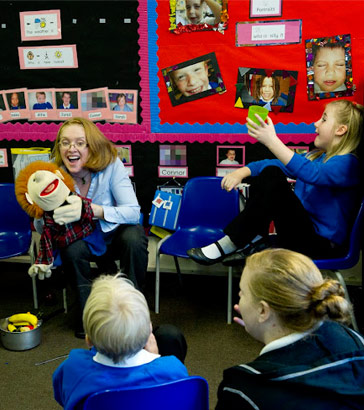Teaching becomes not only a process of ensuring
that students possess a range of possible responses to a given practical
problem, but also that they are aware of this repertoire and the need
for its practical use. They must come to understand which learned strategy
is appropriate for which situation.
Collis and
Lacey, 1996

Lacey (2009) points out that thinking and problem solving is almost always
going to be more difficult for those with SLD because of the likelihood
of poor attention and memory skills, as well as
difficulties with language and communication. Hulme and Mackenzie (1992)
regard memory difficulties as placing additional strains on other cognitive
skills, particularly reading and mathematics.
Lacey also points to research conducted by Wishart (1998) and Jarrold, Nadel
and Vicari (2008) with children and adults with Down syndrome, through which
we might reasonably safely draw the conclusion that those with severe learning
difficulties will learn better when they can see and touch things related
to their learning.
In other words, we can expect more learning to take place when we teach
in a concrete manner, through real actual experience, rather than in an
abstract manner through (for example) language, either written or spoken.
Let's take an example. You have planned to deliver a storytelling lesson that involves the use of four step-by-step Voice Output Communication Aids (VOCA).
The lesson is due to start at 10am. At 9.55, you go to get out the machines from a cupboard in your class where you put them after their last use, but can only find one, which doesn't work. What do you do?
While in the normal course of events, teachers would have ensured resources were adequately prepared, in working order and ready for use, there may be occasions in a busy classroom when this is not possible.

Can you analyse and write down the steps you went through to resolve your dilemma?
Problem solving basically involves four key
mental processes:
Perception
Thinking
Action
Evaluation
Return
Return
Return
Return

Collis, M. and Lacey, P. (1996) Interactive Approaches to Teaching,
London: David Fulton.
Hulme, C. and Mackenzie, S. (1992) Working Memory and Severe Learning
Difficulties, Hove: Lawrence Erlbaum Associates.
Jarrold, C., Nadel, L. and Vicari, S. (2008) 'Down Syndrome Research and
Practice.' Cited in Lacey, P. (2009)
Lacey, P. (2009) Teaching Thinking in SLD Schools: The SLD Experience.
Wishart, J. (1988) Cognitive development in young children with Down Syndrome:
developmental strengths, developmental weaknesses. Cited in Lacey, P. (2009)